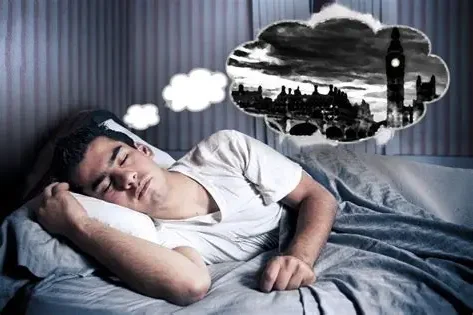1. Dreams Rewrite Our Reality

Dreams are the mind’s secret playground, where reason and imagination mix until they almost make sense. Scientists studying sleep have found that our brains light up during dreams in the same regions used when we’re awake. This means our mind creates an entire world so believable that it feels real. We walk, talk, laugh, and feel as if it’s happening now. That’s what makes dreaming so fascinating. It blurs the lines between what is and what could be, showing that the brain doesn’t really stop when we sleep, it just tells its own version of the story.
2. Everyone Dreams Every Night

Even when you’re sure you didn’t dream, your brain did. Science has confirmed that everyone dreams several times each night during REM sleep. We simply forget most of them the moment we open our eyes. The mind seems to treat dreams like scribbles on a chalkboard, quickly erased by morning light. Sometimes, the most vivid ones linger because they stir emotion or confusion. Whether you remember or not, your brain is busy weaving stories every night, sorting thoughts, feelings, and memories into strange, fleeting patterns that vanish just as fast as they arrive.
3. Dreams Help Solve Problems

It’s often said that sleeping on a problem helps, and that’s more than just advice. Scientists discovered that dreaming allows the brain to organize information and find creative solutions. It’s like your subconscious mind quietly connects the dots while you rest. Many great ideas, from inventions to songs, have surfaced this way. Dreams give space for the imagination to roam freely without logic getting in the way. So when you wake up with a sudden answer to something you struggled with, it might just be your dreaming mind handing you a quiet gift.
4. Dreams Reflect Hidden Emotions

Dreams often speak the language of feelings rather than facts. They can show what we struggle to face when awake. People who experience stress or sadness tend to dream more vividly, and their dreams often mirror their emotional state. It’s as if the mind uses sleep to sort out what hurts. Through symbols, stories, or strange events, the brain releases tension and restores emotional balance. So when a dream feels heavy or confusing, it might be your inner world gently saying, “This is what you need to understand before you move forward.”
5. Some People Can Control Their Dreams

Lucid dreaming is one of the strangest experiences anyone can have. In this rare state, people realize they are dreaming and can sometimes control what happens next. They might choose to fly, talk to someone, or change the story’s ending. Scientists found that certain signals in the brain show when this awareness happens. It’s like becoming both the dreamer and the director at once. For those who experience it, lucid dreaming feels freeing and empowering, as if they’ve stepped into their own imagination and taken the wheel for a while.
6. Dreams Strengthen Memory

Dreams aren’t just stories; they’re a form of mental housekeeping. While we sleep, the brain replays bits of the day and files them into long-term memory. This process helps us learn, retain, and understand new information. It’s why naps after studying can actually improve recall. Dreams act as the mind’s storage system, sorting through what matters and what doesn’t. Though it feels effortless, this nightly process shapes who we become. Each dream quietly polishes our memories, turning passing thoughts into the foundation of knowledge and experience we carry through life.
7. Animals Dream Too

If you’ve ever seen a dog twitch or whimper in its sleep, that’s dreaming in action. Scientists discovered that animals go through the same sleep stages humans do, including REM sleep. Rats, for example, dream of running mazes, while birds replay their songs. It’s comforting to think that dreams might be one of the few things that connect all living creatures. Whether it’s a pet reliving playtime or a wild animal recalling survival, dreaming links the natural world in a shared rhythm of memory, instinct, and quiet imagination.
8. Nightmares Have a Purpose

Nightmares may seem cruel, but they’re part of the mind’s way of helping us face fear. Scientists believe they’re emotional rehearsals that prepare us for real-life stress. When we dream of being chased or lost, it’s the brain practicing danger in a safe space. People who process trauma often dream vividly because their minds are trying to heal. Though unpleasant, nightmares remind us that fear can be felt, understood, and eventually released. They aren’t punishments; they’re mental fire drills that teach us courage even when we don’t realize we’re learning.
9. Dreams Predict Our Mood

Dreams often whisper what the next day will feel like. Studies suggest that people who have darker or chaotic dreams may wake up anxious or tired, while peaceful dreams can lift the mood. It’s not magic; it’s emotion processing. The sleeping brain continues to work through unresolved feelings, sometimes showing what we’re too busy to notice. When you wake up uneasy after a troubling dream, your mind might simply be signaling what it’s been holding inside. Paying attention to your dreams can reveal more about your emotional weather than you think.
10. Our Dreams Can Be Influenced

Dreams don’t form in isolation. The music you hear, the scents in your room, or even what you watch before bed can shape what unfolds in your sleep. Experiments have shown that gentle cues introduced as people drift off can slip into their dreams and affect what they see. If you fall asleep thinking about the ocean, you might dream of waves or sand. Our minds are open canvases at night, painting stories from fragments of our surroundings. It’s a quiet reminder that even in sleep, the world still softly speaks to us.
11. Dreams Blend Memory and Imagination

Dreams often stitch together familiar pieces of life into something entirely new. A face from childhood, a place you once visited, or a moment you half-forgot can reappear in strange combinations. The brain gathers scraps of memory and blends them with imagination, creating scenes that feel both real and unreal. It’s how our mind processes experience, turning fragments into creative stories. This mix of truth and fantasy helps us understand our lives in subtle ways, showing that dreams are memory’s art form, painted in shades only the subconscious can see.
12. Some Dreams Relieve Pain

There’s something quietly healing about dreams. People who live with chronic pain sometimes report dreaming of moving freely or feeling whole again. When they wake, their discomfort briefly eases. Scientists believe the brain uses dreams to rewrite sensory experiences, offering moments of relief the body can’t always give. It’s a small miracle of the mind, showing how imagination and biology intertwine. In dreams, pain can fade, and the self can remember what it feels like to be unbroken, if only for a few precious moments.
13. People Can Share Similar Dreams

Have you ever had a dream strikingly similar to someone else’s? Some people report dreaming the same scenes or emotions as friends or family members. Scientists can’t fully explain it, but shared experiences and emotional closeness may cause people’s dreams to echo one another. When two people feel deeply connected, their minds might draw from similar imagery. Whether coincidence or something more, it’s a gentle mystery that reminds us how closely human hearts and imaginations can align, even when they wander in separate sleeps.
14. Dreams Spark Creativity

Dreams are often behind some of the world’s most creative breakthroughs. Many writers, musicians, and inventors credit dreams for sudden inspiration. When the logical mind rests, creativity runs wild, exploring paths that waking thought might block. A dream can reveal a melody, a story idea, or even a solution to a complex problem. It’s a reminder that imagination doesn’t stop when we close our eyes. Our dreams quietly work behind the scenes, turning thoughts into art and proving that rest can be just as powerful as effort.
15. Dreams Happen in Real Time

Though they seem to bend time, dreams unfold in real minutes. Experiments show that when people communicate during lucid dreams using eye movements, their responses match the timing of real-world seconds. The stories may feel longer because of how memory stretches perception, but the experience itself flows naturally. The brain builds entire adventures within that brief REM window. This discovery shows that our sleeping mind operates with the same rhythm as waking life, weaving complex tales inside the same fragile heartbeat of time.
16. Sleep Disorders Affect Dreams

For some people, the line between dream and reality blurs too much. Conditions like sleepwalking or REM behavior disorder cause dreamers to move, talk, or act out their dreams physically. It happens because the body’s natural paralysis during deep sleep doesn’t fully activate. These moments can be frightening, yet they reveal how deeply dreams are tied to the body. When the system misfires, the mind’s stories spill into real life, reminding us that dreaming isn’t separate from our physical world—it’s part of it.
17. Dream Time Feels Different

Time stretches in strange ways when we dream, creating a rhythm unlike waking life. A single moment can feel like hours, or an entire adventure can unfold within seconds. Scientists believe this happens because our brains lose touch with real-world cues such as light, sound, and motion. Inside that world, the mind sets its own clock, allowing time to expand or shrink depending on the story it tells. That’s why we can live a lifetime in a dream, only to wake moments later with the odd feeling that time itself played along.
18. Dreams Can Warn of Illness

There are surprising stories of people dreaming about illness before symptoms appeared. While it sounds mystical, it might be the brain noticing subtle changes in the body and expressing them symbolically. Someone might dream of drowning before discovering heart trouble, or of heat before a fever. Though not scientifically proven as a diagnostic tool, it shows how deeply the mind and body communicate. Dreams may serve as early whispers of imbalance, quietly reminding us to listen more closely to what we feel.
19. Some People Dream in Black and White

Not everyone dreams in color. Studies show that older generations who grew up with black-and-white television are more likely to dream that way. Our surroundings shape how the brain visualizes experience, even while sleeping. People raised in colorful environments dream more vividly. It’s proof that what we see daily seeps into the imagination. Dreams, it seems, borrow their palette from the world around us, turning the images of our waking life into a moving memory that flickers across the mind’s screen.
20. The Mystery of Dreams Remains

After decades of study, scientists still don’t know exactly why we dream. They’ve uncovered patterns, theories, and correlations, but no single answer fits all. Maybe dreams are memory at work, emotion in motion, or consciousness exploring itself. What’s certain is that they keep us curious. Every dream is a small adventure, both familiar and strange, showing us that even in sleep, we’re never truly still. The mystery is what makes them beautiful. It’s what keeps us wondering, night after night, what story the mind will tell next.
This story 20 Unexplainable Things Scientists Have Learned from Studying Dreams was first published on Daily FETCH


